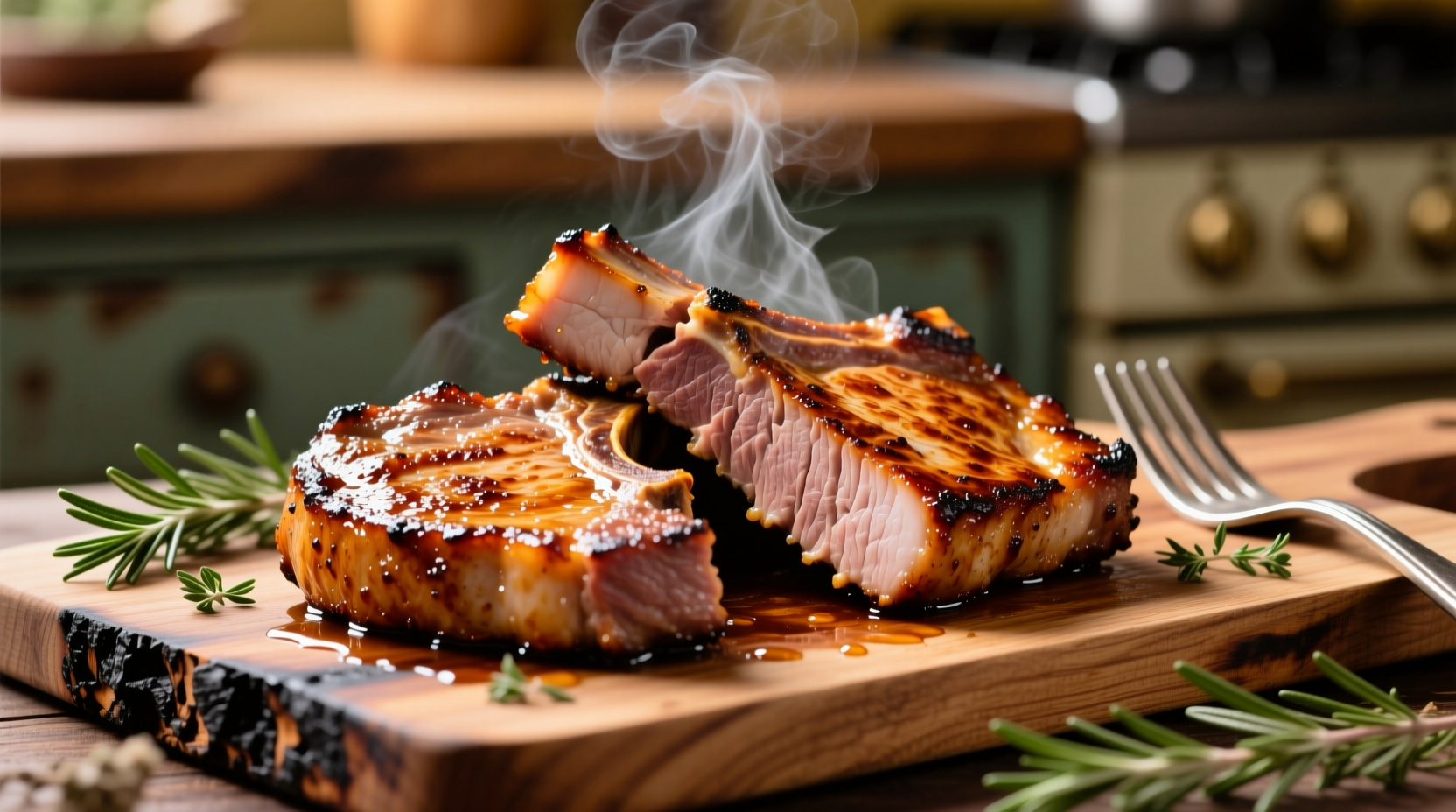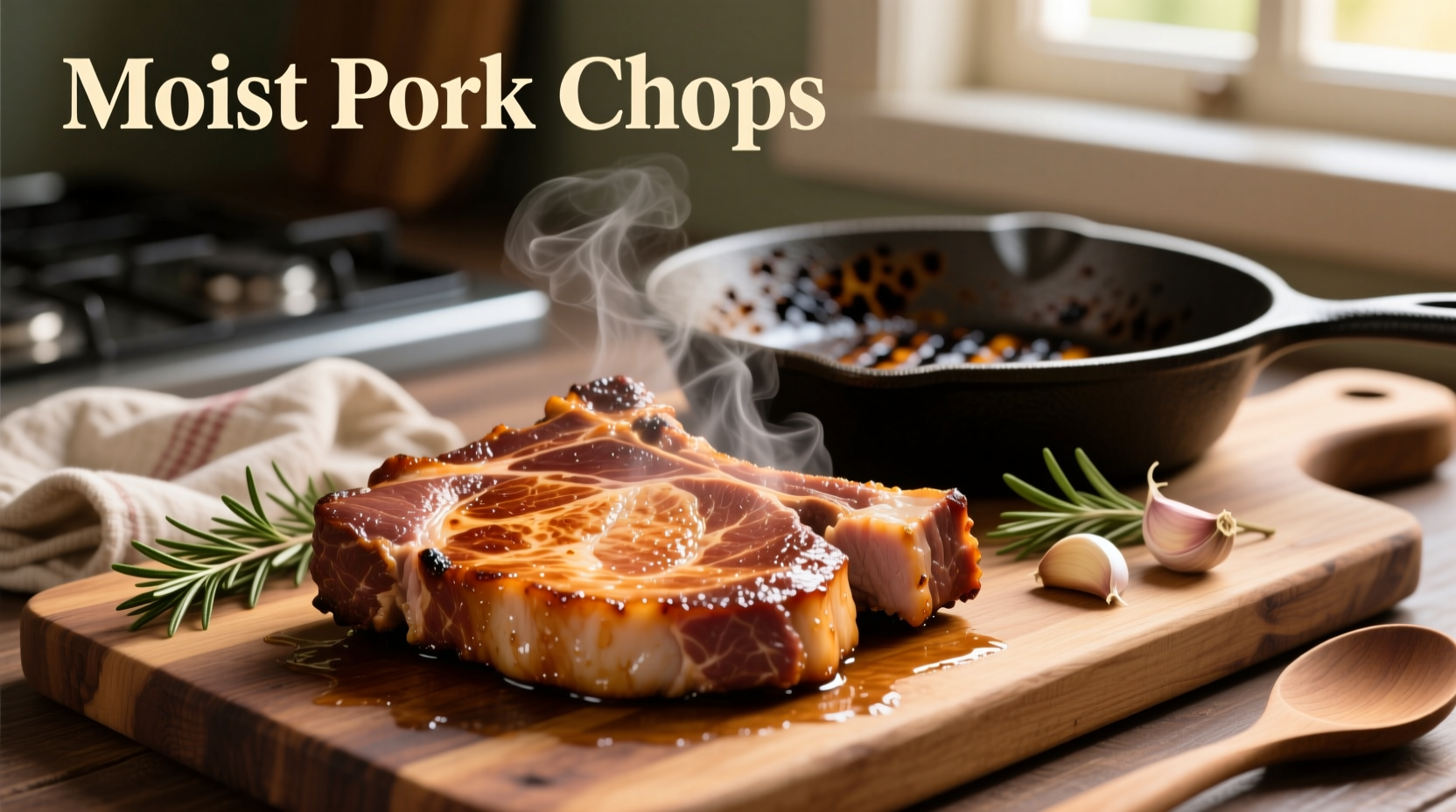Perfectly moist pork chops require three essential steps: proper brining (30 minutes minimum), cooking to exactly 145°F internal temperature, and resting for 5-10 minutes before serving. Bone-in, 1-inch thick chops with a fat cap yield the juiciest results when using the reverse sear method or pan-to-oven technique.
Nothing ruins a meal faster than dry, tough pork chops. After decades of culinary testing and kitchen failures, we've distilled the exact science-backed methods to guarantee juicy results every time. Whether you're a beginner or experienced cook, these techniques transform ordinary pork chops into restaurant-quality perfection.
The Science Behind Moist Pork Chops
Pork chops dry out when proteins contract excessively during cooking, squeezing out moisture. The USDA's Food Safety and Inspection Service confirms that pork reaches safe doneness at 145°F (63°C), significantly lower than the outdated 160°F recommendation. Cooking beyond this temperature causes irreversible moisture loss. Understanding this critical temperature threshold is the foundation of juicy pork chops.
| Internal Temperature | Doneness Level | Moisture Retention |
|---|---|---|
| 130-135°F | Medium-Rare | Optimal (slightly pink) |
| 140-145°F | Medium | Ideal (USDA recommended) |
| 150-155°F | Medium-Well | Noticeable dryness |
| 160°F+ | Well-Done | Significantly dry |
Essential Preparation Techniques
Starting with quality meat matters. Choose bone-in, 1-inch thick pork chops with a visible fat cap—they retain moisture better than boneless cuts. The American Meat Science Association recommends dry brining as the most effective moisture-retention method:
- Pat chops dry with paper towels
- Rub with ½ teaspoon kosher salt per pound
- Refrigerate uncovered for 30-60 minutes
- Bring to room temperature (45-60 minutes) before cooking
This process allows salt to penetrate the meat, improving moisture retention during cooking. Avoid wet brines for pork chops—they can make the exterior mushy without significant moisture benefits.
Proven Cooking Methods
Two techniques consistently deliver moist results:
1. Pan-to-Oven Method (Best for Thick Chops)
- Preheat oven to 400°F
- Sear chops in hot cast-iron skillet for 2-3 minutes per side
- Transfer skillet to oven for 6-8 minutes
- Remove when internal temperature reaches 140°F
2. Reverse Sear (Most Forgiving Technique)
- Preheat oven to 275°F
- Place chops on wire rack over baking sheet
- Cook until internal temperature reaches 125°F (20-25 minutes)
- Sear in hot skillet for 60-90 seconds per side
Both methods prevent the temperature gradient that causes overcooked exteriors. The National Pork Board confirms that resting chops for 5-10 minutes after cooking allows juices to redistribute—cutting too soon releases precious moisture.

Critical Success Factors
Avoid these common pitfalls that lead to dry pork chops:
- Skipping the thermometer: Visual cues are unreliable. Invest in an instant-read thermometer.
- Overcrowding the pan: Causes steaming instead of searing. Cook in batches if necessary.
- Cooking straight from refrigerator: Creates uneven cooking. Always bring to room temperature.
- Ignoring carryover cooking: Temperature rises 5-10°F after removal from heat.
When Things Go Wrong
If your chops turn out slightly dry, salvage them with these professional techniques:
- Slice thinly against the grain
- Serve with pan sauce made from fond and broth
- Top with compound butter for added moisture
- Use in sandwiches where additional moisture comes from condiments
Remember that lean cuts like loin chops require more precision than fatty blade or rib chops. Adjust cooking times accordingly based on thickness and cut.











 浙公网安备
33010002000092号
浙公网安备
33010002000092号 浙B2-20120091-4
浙B2-20120091-4